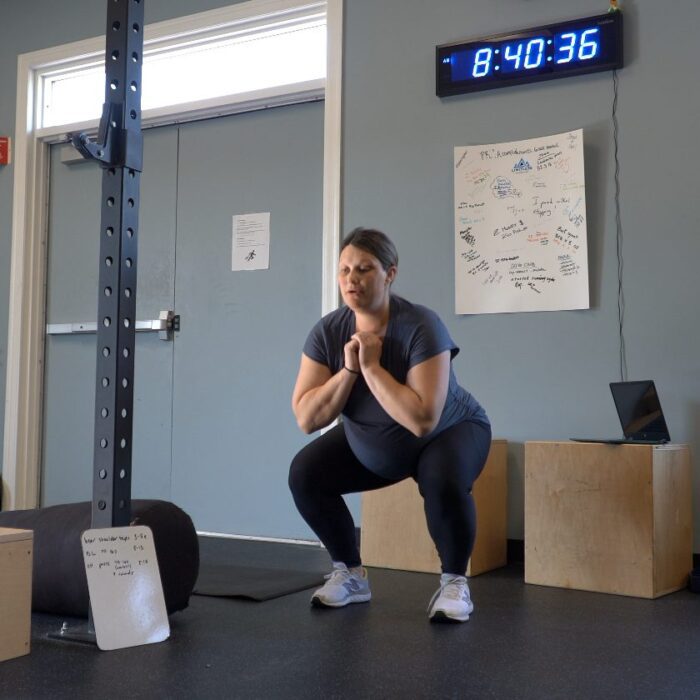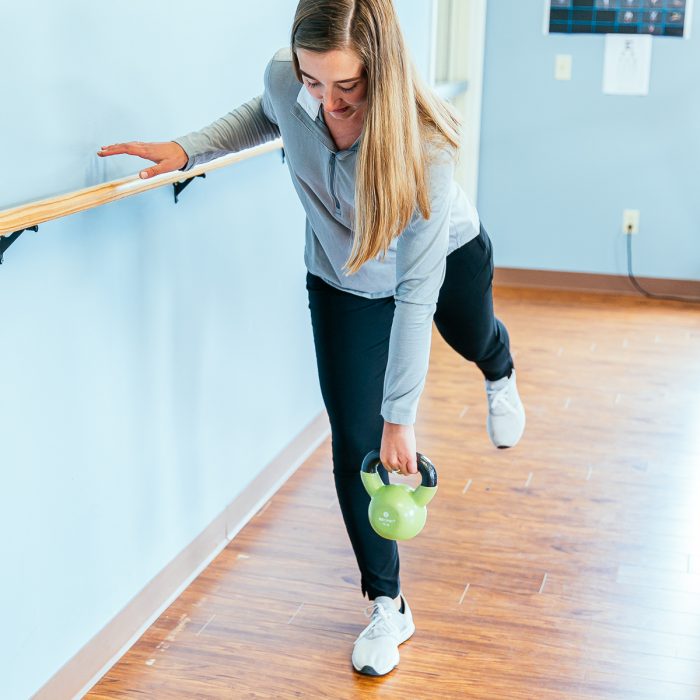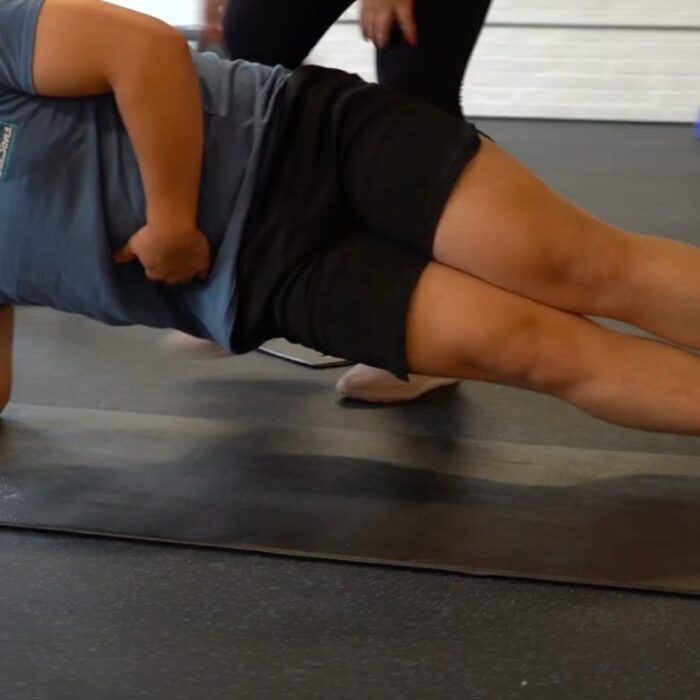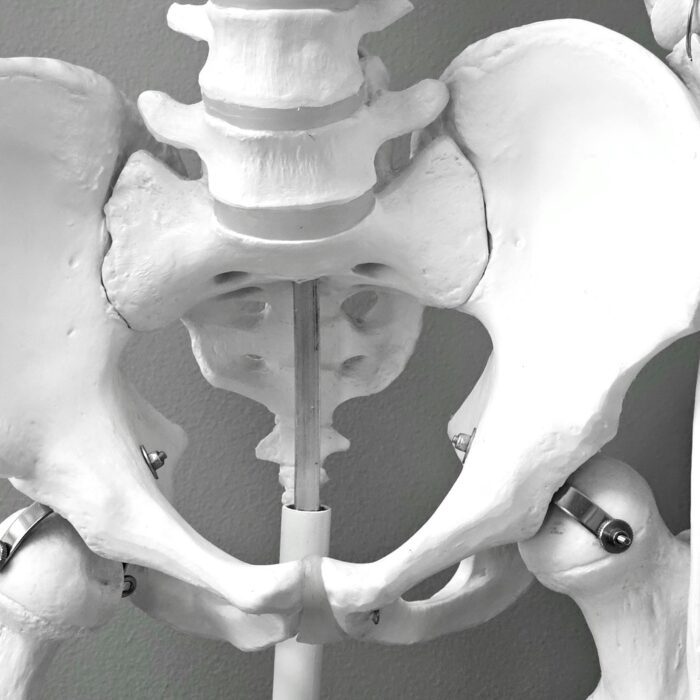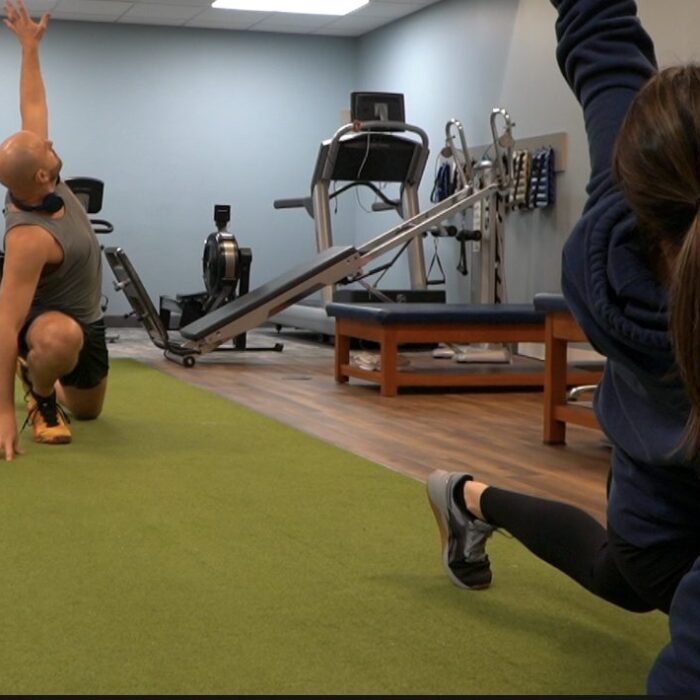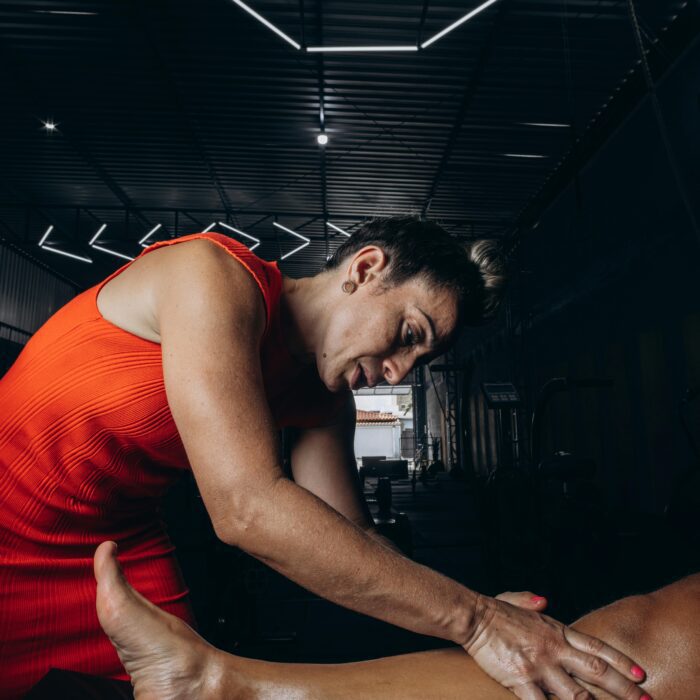Urinary incontinence affects millions of adults, yet many people spend years managing leaks without ever hearing about pelvic floor therapy for incontinence. They purchase pads, limit fluids, change routines, and quietly reorganize their lives around bathroom access. They may receive prescriptions, attempt home remedies, or get referred to specialists — but conservative physical therapy is still rarely discussed early, even though major medical guidelines list it as first-line treatment.
The research is clear: pelvic floor physical therapy is an evidence-backed, low-risk, cost-effective option that addresses the underlying causes of incontinence rather than masking symptoms. Many patients see measurable improvement in a matter of weeks, and for those who eventually choose surgery, pre-treatment pelvic training improves outcomes.
At Limitless Physical Therapy Specialists, pelvic health is a core focus. Our Rochester-area clinics have treated thousands of individuals with stress urinary incontinence, urge incontinence, mixed cases, and overactive bladder. This article outlines what the science shows, how therapy works, and what to expect from treatment — all grounded in clinical evidence and real-world patient outcomes.
Why Pelvic Floor Physical Therapy Is First-Line Treatment for Incontinence
Medical organizations like the American Urogynecologic Society and the American College of Obstetricians and Gynecologists recommend pelvic floor muscle training as the initial intervention for many types of urinary incontinence. These recommendations are backed by decades of research, including randomized controlled trials and systematic reviews showing that properly supervised pelvic floor therapy reduces leakage episodes and improves continence.
The logic behind this recommendation is rooted in anatomy and function. The pelvic floor — a group of deep muscles at the base of the pelvis — supports the bladder, stabilizes the urethra, and coordinates with the diaphragm and deep abdominal muscles to maintain continence. When these muscles lose strength, become overly tense, or lose timing and coordination, leakage can follow.
Physical therapy evaluates all of these components. The therapist identifies whether the primary issue is weakness, poor coordination, muscle tension, altered breathing mechanics, or a combination. With that information, a personalized treatment plan is created that aligns with medical best practice.
Some patients understandably ask why pelvic floor therapy isn't always the first suggestion they hear. In many healthcare settings, short visit times and limited familiarity with pelvic rehab can lead to medication-first approaches. But because medications do not correct muscle function, guidelines emphasize conservative care first. When patients begin therapy early, the outcomes can be significant.
Research Shows PT Outperforms Medications and Injections
Clinical data consistently shows that pelvic floor therapy for incontinence offers meaningful improvement for a broad range of patients. Research published through the National Institutes of Health and summarized by organizations like the National Association for Continence demonstrates the following patterns:
Medications prescribed for overactive bladder may reduce urgency but often bring bothersome side effects such as dry mouth, constipation, and blurred vision. They also do not address muscular dysfunction. When patients stop taking them, symptoms often return.
Bulking agent injections provide temporary improvement for some people with stress incontinence, but they usually need to be repeated. According to the National Association for Continence, comparing physical therapy to urethral bulking injections shows an average savings of more than $10,000 once repeat procedures, complications, and time away from work are factored in.
Pelvic floor therapy, in contrast, teaches the muscles how to function properly and promotes lasting change. Gains tend to persist as long as patients follow maintenance exercises. For individuals who eventually consider surgery, completing therapy first can improve surgical outcomes by building a stronger muscular foundation.
The evidence base is large, with decades of trials showing pelvic floor muscle training can cure or significantly reduce leakage in many individuals. The consistency of these findings is why pelvic floor therapy is placed at the top of most treatment guidelines.
Cost-Effectiveness: Save $10,000+ Compared to Surgical Options
Pelvic floor therapy for incontinence offers strong financial advantages. Surgical procedures like slings and bladder suspensions come with costs related to the operation itself, anesthesia, postoperative care, and recovery time. Even with insurance, deductibles and missed work can add up.
Research comparing physical therapy to injection-based treatments found an average savings of $10,129 per patient when therapy was used instead of injections. When compared to surgery, overall savings are often even higher.
Most insurance plans cover pelvic floor physical therapy under standard benefits. Limitless PT verifies coverage before the first appointment, helping patients understand copay amounts and any authorization requirements. For those paying out of pocket, the cost of a typical therapy program is far below that of invasive procedures.
The cost argument becomes even stronger when considering quality of life improvements — reduced pad use, fewer interruptions to daily activities, and more freedom in exercise, work, and social settings.
Types of Incontinence Treated with Pelvic Floor Therapy
Urinary incontinence is not a single condition. There are multiple types, each with unique causes and patterns. Accurate diagnosis is essential for selecting the right approach to pelvic floor therapy for incontinence. An exercise that helps one type can worsen another, which is why clinical evaluation is a critical first step.
The most common categories treated at Limitless PT include stress incontinence, urge incontinence, overactive bladder, and mixed incontinence.
Stress Incontinence: Leaks During Activity or Exertion
Stress urinary incontinence occurs when physical movement or exertion increases abdominal pressure and the pelvic floor cannot counter it. Activities such as coughing, sneezing, running, laughing, jumping, and lifting are common triggers.
This pattern often develops after pregnancy and childbirth due to stretching or weakening of pelvic tissues. It may also appear in menopause due to hormonal changes affecting tissue elasticity. Men may experience stress incontinence after prostate surgery when the sphincter mechanism is affected.
Pelvic floor therapy targets the muscles that support the urethra and help maintain closure during movement. According to publicly available clinical guidance from UCHealth and top urology centers, strengthening the pelvic floor and improving coordination can significantly reduce or eliminate stress leakage.
An important and sometimes surprising fact is that not all cases stem from weakness. Some patients present with high muscle tension, meaning the pelvic floor is too tight to contract effectively during quick movements. Therapy must begin with relaxation techniques in these cases before strengthening can be effective.
Urge Incontinence and Overactive Bladder
Urge incontinence feels very different from stress incontinence. Instead of leaking with movement, individuals experience a sudden and intense need to urinate, sometimes with little warning. This can happen even when the bladder is not full.
Overactive bladder can involve frequent urination, nighttime voiding, and urges that disrupt daily routines. The causes can include bladder lining sensitivity, nervous system overactivity, prior infections, or long-standing voiding habits that taught the bladder to signal urgency prematurely.
Pelvic floor therapy helps regulate these patterns through:
Bladder retraining programs that gradually extend the time between bathroom trips
Urge suppression techniques that calm overactive bladder signals
Training the pelvic floor to respond reflexively during urgency episodes
Education on fluid timing, bladder irritants, and behavioral triggers
Relaxation techniques when pelvic floor muscle tension is contributing
Several major medical centers, including Cleveland Clinic, provide publicly available guidance on how bladder training and pelvic floor muscle exercises help regulate urgency. The combination of these approaches often reduces both the intensity and frequency of urgent signals.
How Pelvic Floor Therapy for Incontinence Works
Pelvic floor therapy begins with a detailed evaluation, often including questions about leak frequency, triggers, fluid intake, bladder habits, bowel function, history of pregnancies or surgeries, and impact on daily life. The physical exam evaluates how the pelvic floor contracts, relaxes, and coordinates with breathing and core mechanics.
This individualized assessment guides the creation of a structured treatment plan. Therapy typically includes weekly sessions for several weeks, with daily home exercises that reinforce progress.
The PT process often includes:
Re-training muscle activation and relaxation
Teaching correct breath mechanics
Improving timing between the pelvic floor and movement
Strengthening related muscle groups such as hips and deep abdominal muscles
Addressing constipation and other bowel-related contributors
Using relaxation techniques to regulate the nervous system
As skills improve, exercises progress from basic activation to functional movements that reflect the demands of daily life.
Beyond Basic Kegels: Specialized Exercise Protocols
Kegels are widely known but often misunderstood. Many people attempt them incorrectly by clenching the wrong muscles, holding their breath, or bearing down instead of lifting. Pelvic floor therapy refines technique and ensures exercises actually engage the target muscles.
Therapy may include:
Short, rapid contractions (“quick flicks”) to prepare the pelvic floor for sudden pressure changes
Longer holds to build endurance and support prolonged activities
Functional integration, such as coordinating the pelvic floor with standing up, lifting, or exercise tasks
Breathing strategies that support engagement rather than inhibit it
For example, individuals who leak during exercise often benefit from learning how to time their pelvic floor activation during the specific movements that challenge them. Someone who leaks during weightlifting may require an entirely different strategy than someone who leaks during brisk walking.
This specificity — built from detailed clinical assessment — is what sets supervised pelvic floor therapy apart from generic at-home instructions.
Biofeedback, Bladder Training, and Manual Therapy Techniques
Biofeedback uses sensors to provide real-time visual or auditory signals about pelvic floor activation. This tool helps patients see whether they are contracting, relaxing, or over-activating, and studies published through the National Institutes of Health indicate that biofeedback can enhance the effectiveness of pelvic floor muscle training.
Bladder training programs help reshape urgency patterns. If someone is currently voiding every 30–60 minutes, therapy may start by extending that interval in small increments until a more typical range of two to four hours is achieved.
Manual therapy may be used to address restricted or painful tissues. When appropriate, therapists may apply gentle internal or external techniques to release tension, improve mobility, and restore normal movement in the pelvic region.
Electrical stimulation can be paired with therapy in cases where the pelvic floor muscles are too weak to contract on their own. Small electrical pulses help stimulate activation until voluntary control improves.
Together, these tools create a comprehensive approach that adapts to each individual’s needs and goals.
What to Expect: Your Incontinence Treatment Timeline
Patients often feel more confident beginning pelvic floor therapy when they understand the general timeline. While individual progress varies, there are consistent patterns seen across thousands of clinical cases.
The first session focuses on understanding your symptoms, conducting an evaluation, and outlining a clear plan that explains what to expect over the coming weeks.
Early improvements often appear when daily habits stabilize — changes in fluid timing, fewer “just in case” bathroom trips, and improved awareness of pelvic floor activation during movement.
As treatment progresses, the exercises become more automatic, and the body starts responding without requiring conscious effort.
Weeks 1-6: Initial Improvements and Skill Building
During the first six weeks, patients typically learn foundational skills that support long-term continence. These include:
Finding the correct pelvic floor muscles
Coordinating breath and movement
Reducing unnecessary tension
Strengthening the muscles when weakness is present
Learning urge suppression techniques
Adjusting daily habits that may be aggravating symptoms
Many patients notice early wins within two to three weeks, such as longer intervals between bathroom trips or fewer leaks during specific activities. These improvements build confidence and reinforce the value of practice.
This early phase is about establishing the building blocks. With consistent home exercise and weekly guidance, the system begins to function more reliably.
Long-Term Success: Maintaining Results Beyond Therapy
Pelvic floor therapy creates measurable improvements, but maintenance is essential for keeping them. Fortunately, the maintenance phase requires much less effort than initial rehabilitation.
Most people transition to a routine of short weekly exercises that reinforce strength, coordination, and relaxation. The Limitless Life App provides exercise videos, reminders, and progress tracking, making it easier to stay consistent. This ongoing support helps prevent regression.
Life stages and events can occasionally disrupt pelvic function — pregnancy, illness, surgery, hormonal shifts, or extended periods of inactivity. When this happens, a short round of refresher sessions often brings symptoms back under control quickly.
Maintenance is not about doing long routines forever; it is about keeping the system tuned so that continence remains stable.
Why Choose Limitless PT for Incontinence Treatment
Limitless Physical Therapy Specialists offers a specialized pelvic health program across our Victor and Brighton locations. Pelvic health is not a side offering — it is an established area of clinical focus supported by experienced therapists and dedicated private treatment spaces.
Our clinicians receive advanced training in pelvic floor dysfunction, attend continuing education courses in the field, and stay current with emerging research and evidence-based methods. Because the clinics see high volumes of pelvic health cases, therapists develop the pattern recognition needed for accurate assessment and nuanced treatment planning.
Patients at Limitless PT benefit from longer appointment times, personalized attention, and a respectful, private environment where sensitive topics can be discussed comfortably.
Specialized Pelvic Health Expertise Across Rochester Locations
The Victor and Brighton locations have equipment designed specifically for pelvic rehab, including pelvic-floor-specific biofeedback systems, electrical stimulation devices, educational models, and digital tools that support home exercise compliance.
Therapists in these programs regularly evaluate complex cases involving stress incontinence, urge incontinence, pelvic pain, postpartum dysfunction, surgical recovery, and chronic patterns that haven’t responded to other care. This level of specialization gives patients access to strategies that are grounded in both research and clinical experience.
The focus is on identifying the true drivers of symptoms — muscular, behavioral, structural, or neurological — and addressing them in a straightforward, clear, and practical way.
Sensitive, Private Care That Addresses Root Causes
Incontinence can feel isolating, but it is a medical condition that responds to the right treatment. Limitless PT provides care in private rooms, allowing patients to speak openly and receive hands-on support without feeling rushed or exposed.
The clinical environment emphasizes clear, judgment-free communication. Patients receive explanations in simple language, with real examples of how daily habits or physical patterns play a role in leaking. Treatment extends beyond symptom management, addressing factors like hip strength, abdominal control, constipation, or bladder behavior that may be contributing.
The goal is always function — helping patients regain control, confidence, and their ability to participate fully in daily life.
Take Control of Your Bladder Health Today
Many people living with urinary incontinence don’t realize effective, evidence-based care exists. They learn to adapt around symptoms instead of seeking treatment that can help them feel more like themselves again.
Pelvic floor therapy for incontinence offers a path backed by research and supported by clinical results across thousands of patients. It is accessible, non-invasive, and built on principles that improve long-term control.
You deserve the ability to sneeze without worry, exercise without leakage, sleep through the night, and move through your day without constantly searching for the nearest bathroom.
You Don't Have to Live With Leaks—Help Is Available
Incontinence may be common, but it is not something you must accept as an inevitable part of aging, childbirth, surgery, or life circumstances. The body’s continence system can be repaired, retrained, and strengthened with the right care.
Pelvic floor therapy gives you clarity about what is happening and a personalized plan for fixing it. The improvements are real, measurable, and achievable for many people — even after years of symptoms.
If you are ready to regain control, Limitless PT is here to help you take the next step.
Schedule Your Confidential Pelvic Health Consultation
Limitless Physical Therapy Specialists
Victor Location
6534 Anthony Drive Suite C, Victor, NY 14564
Phone: (585) 869-5140
Brighton Location
2561 Lac DeVille Boulevard Suite 100, Rochester, NY 14618
Phone: (585) 473-1290
Email: help@limitlesspts.com
Website: limitlesspts.com
Fax: 585.869.5142
We accept Medicare, Medicaid, Worker's Compensation, and most commercial insurance plans. Our team can verify your benefits before your first appointment and answer any questions.
Q&A: Common Questions About Pelvic Floor Therapy for Incontinence
Q: Is pelvic floor therapy for incontinence effective?
A: Yes. Research from NIH, the National Association for Continence, and major medical centers shows strong outcomes for stress incontinence, mixed incontinence, and many cases of urge incontinence.
Q: How long does treatment take?
A: Many patients attend weekly sessions for 4–6 weeks and begin noticing changes in that timeframe. More complex cases may require a longer plan.
Q: Will insurance cover pelvic floor therapy?
A: Most insurance plans cover physical therapy services. Limitless PT verifies benefits before your first appointment.
Q: What happens during treatment sessions?
A: Treatment occurs in a private room and may include manual therapy, exercise instruction, biofeedback, bladder retraining, and updated home practice.
Q: Do I need a referral?
A: New York permits direct access to physical therapy, though some insurance plans may require a referral. Our team can check your benefits.
Q: Can men benefit from pelvic floor therapy?
A: Yes. Men, especially those recovering from prostate surgery, often improve continence with pelvic floor therapy.

